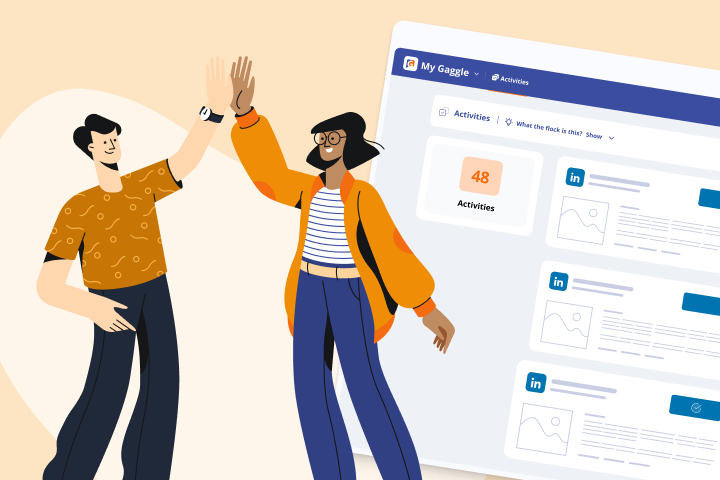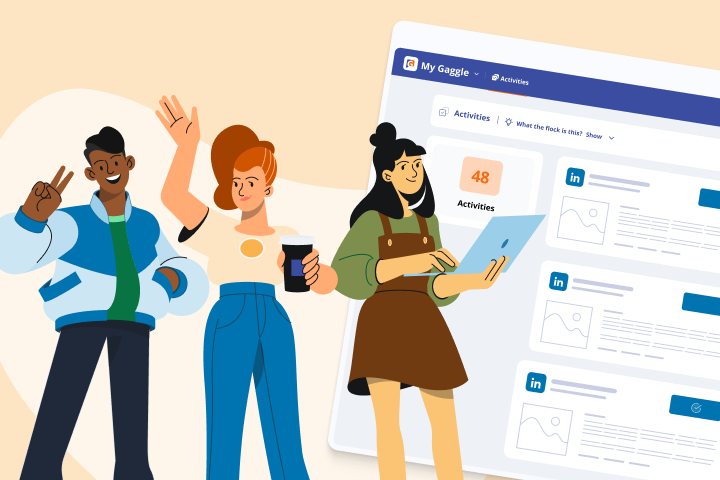Tips To Strengthen Employee Engagement Initiatives
Brands looking for a competitive edge are realizing the importance of employee engagement. Employee engagement is the connection employees have to their employer and how committed they are to their work and workplace. This connection is why employee engagement is important. When employees are engaged they’re happier and more productive, which produces greater profitability for businesses.
But, keeping employees engaged in the workplace isn’t easy. After years of employee engagement trending upward, the U.S. saw employee engagement drop in 2021 for the first time in a decade, and the downward pattern has been continuing ever since.
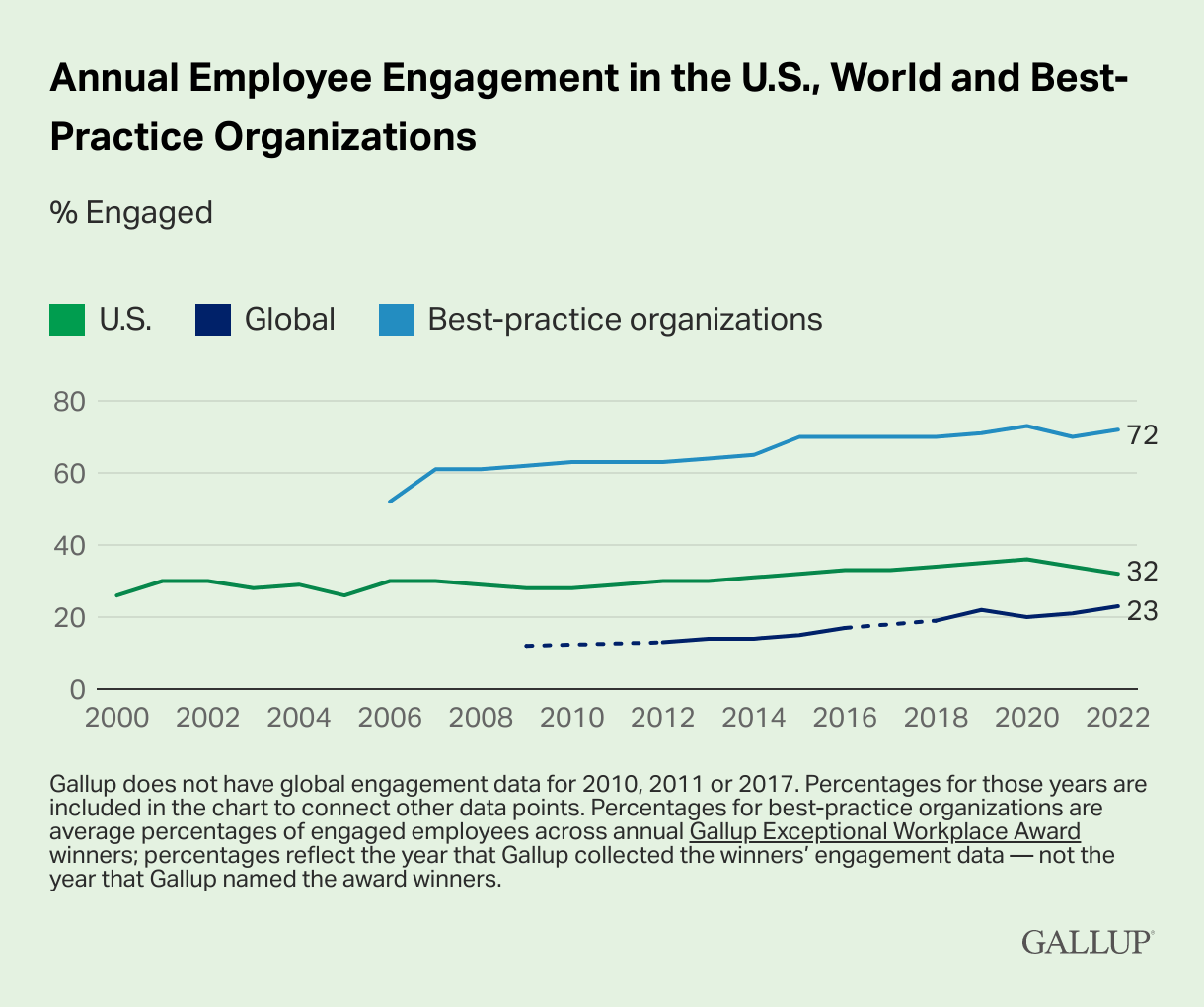
Source: Gallup
To keep employees actively engaged, companies need an effective employee engagement program and dedicated employee engagement initiatives.
In this article, we’re sharing what goals to aim for with employee engagement and tips on how to drive an employee engagement strategy.
Employee Engagement Strategy
The benefits of employee engagement are numerous. A company with a strong employee engagement strategy can experience a reduction in employee turnover, an increase in productivity, and a boost in employee advocacy. These are just a few of the benefits of high employee engagement that can be achieved by using an employee engagement strategy.
So, how do companies develop their employee engagement strategies? More importantly, how do they turn disengaged employees into engaged employees?
First, define your employee engagement goals. Knowing what goals to aim for will give you a sense of direction and help you develop your employee engagement strategy. For example, perhaps, your company wants to increase brand awareness, attract new talent, and improve customer satisfaction.
Once your goals are defined, you’ll want to drive high employee engagement to achieve them. Here are six tips on how to boost employee engagement within your company:
1. Maintain Clear Communication
Transparent, open communication is key to building trust with employees. Employees want to feel valued and in the loop. They want to know what the company is currently doing and where the company is headed.
Keep the lines of communication flowing with consistent individual check-ins, team meetings, company-wide emails, etc.
2. Foster Strong Connections
When employees have strong relationships with their managers and co-workers, they’re more likely to be engaged in their work. Foster a culture that builds engagement through team-building, employee resource groups (ERGs), and company-wide events. When employees feel connected to their colleagues and company, they feel a sense of purpose beyond their everyday role.
3. Provide Training and Resources
Employees need to feel confident and capable in their roles. When an employee feels ill-equipped to handle a task due to lack of knowledge or tools, they’ll disengage. Make sure employees have the training and resources accessible to not only do their current jobs but to grow their careers, too.
Offer professional development opportunities like structured training, mentorships, or upskilling courses. By investing in your employees’ career growth, they’ll feel that you value them and their work. In turn, this builds loyalty, which translates into higher employee engagement and a desire to remain with the company long-term.
4. Focus on Employees’ Well-Being
There is a direct correlation between employee well-being and employee engagement. When employees are physically, mentally, and emotionally healthy, their engagement is higher and their performance is better.
To ensure your employees can perform at their full potential, implement a holistic well-being program. This can include mental health days, onsite workshops, or affiliations with fitness centers to promote healthy lifestyles. Prioritizing wellness shows that you genuinely care about your employees.
5. Recognize and Reward Accomplishments
Recognition for a job well done makes employees feel valued at work and boosts their level of engagement. Create a formal program for acknowledging and rewarding impactful accomplishments, both big and small.
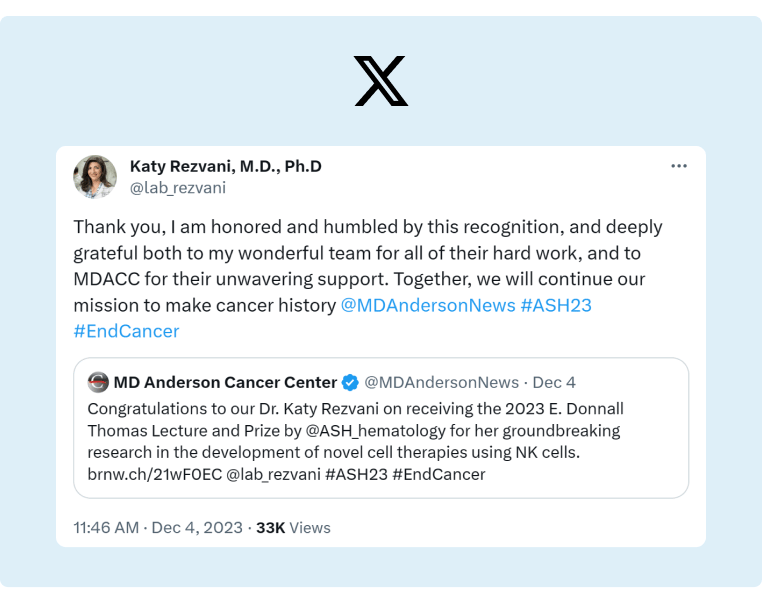 Source: Katy Rezvani, M.D., Ph.D
Source: Katy Rezvani, M.D., Ph.D
For effective recognition, make sure recognition is timely (not too long after the event), specific (mention exactly what the employee did), and values-based (e.g., ties back to company values).
6. Gather Feedback From Employees
You can’t fix something if you don’t know that it’s broken. You need honest feedback from your employees on how they feel about the company as well as their jobs, managers, and leaders. An employee engagement survey is a great way to gather this feedback. Then, use that data to make needed adjustments to company culture and procedures.
Now that you have a plan in place to drive employee engagement, let’s take a look at the types of employee engagement initiatives and activities.
Types of Employee Engagement Initiatives
Let's explore some employee engagement examples. Consider using one or all five of these types of employee engagement initiatives and activities:
1. Team-Building Activities
Structured employee engagement activities like retreat activities or team-building exercises are great for boosting employee engagement. These activities motivate your employees to work together to solve a problem or complete a task (e.g., an in-person or virtual Escape Room).
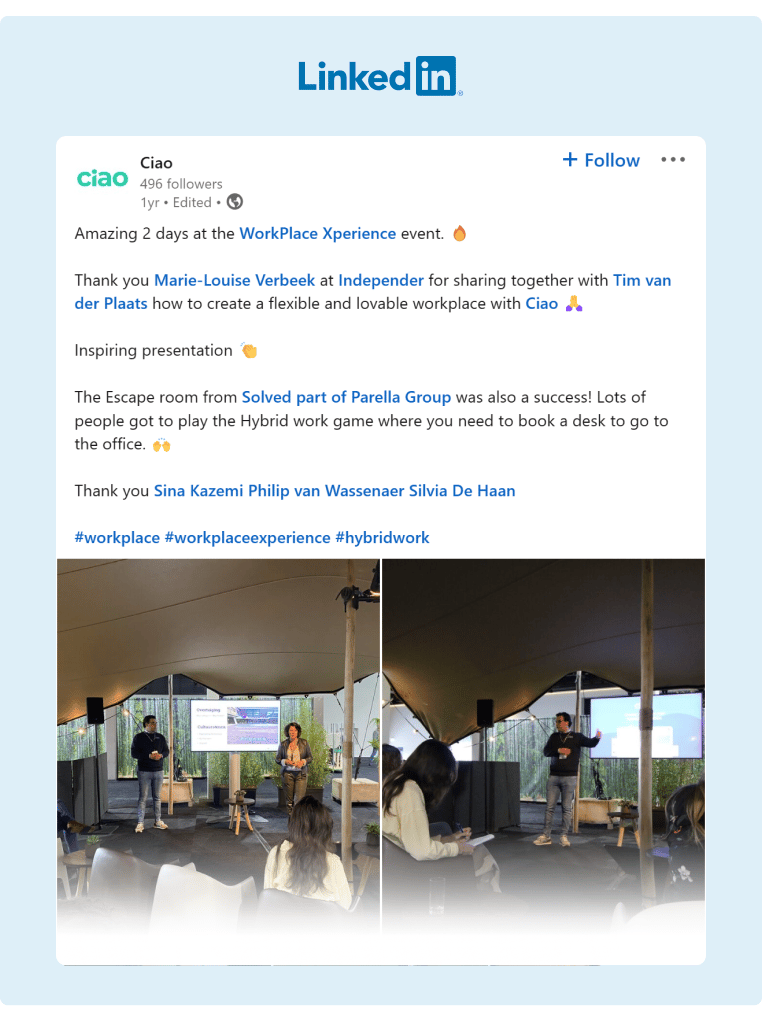
Team-building encourages creativity, builds trust, and helps employees learn new skills. More importantly, it strengthens the team’s bond and connection, which translates into better teamwork and productivity for future collaborative projects.
2. Professional Growth Opportunities
Offering opportunities for professional growth not only helps employees grow within their roles but improves employee retention, too. Allow employees to attend conferences (in person or virtually) to learn from industry experts. Set aside time for them to take courses to further their skills (e.g. HubSpot Academy).
When you invest in your employees through professional learning, they’ll return the favor by bringing to the table new ideas and strategies that the company can benefit from.
3. Employee-Led Clubs
Incorporate employee-led clubs into your company culture. These clubs help employees bond with co-workers who share common interests. They can also help employees strengthen their public speaking and presentation skills.
For example, an employee-led book club can include leadership roles like leading group discussions. It can also foster a safe environment for cultivating ideas and opinions. When employees feel comfortable contributing, they carry that sentiment back to their job roles.
4. Employee Appreciation Programs
Show your employees that their hard work doesn’t go unnoticed. Let’s say the sales team hits a sales goal, or the company has a great quarter. An employee appreciation program can reward them with tiered prizes and rewards. These rewards can include gift cards, monetary bonuses, additional PTO, etc.
If you’re looking to specifically reward employee engagement on social media, consider using an employee engagement platform. Here, you can track employee engagement and offer immediate recognition and rewards for a job well done.
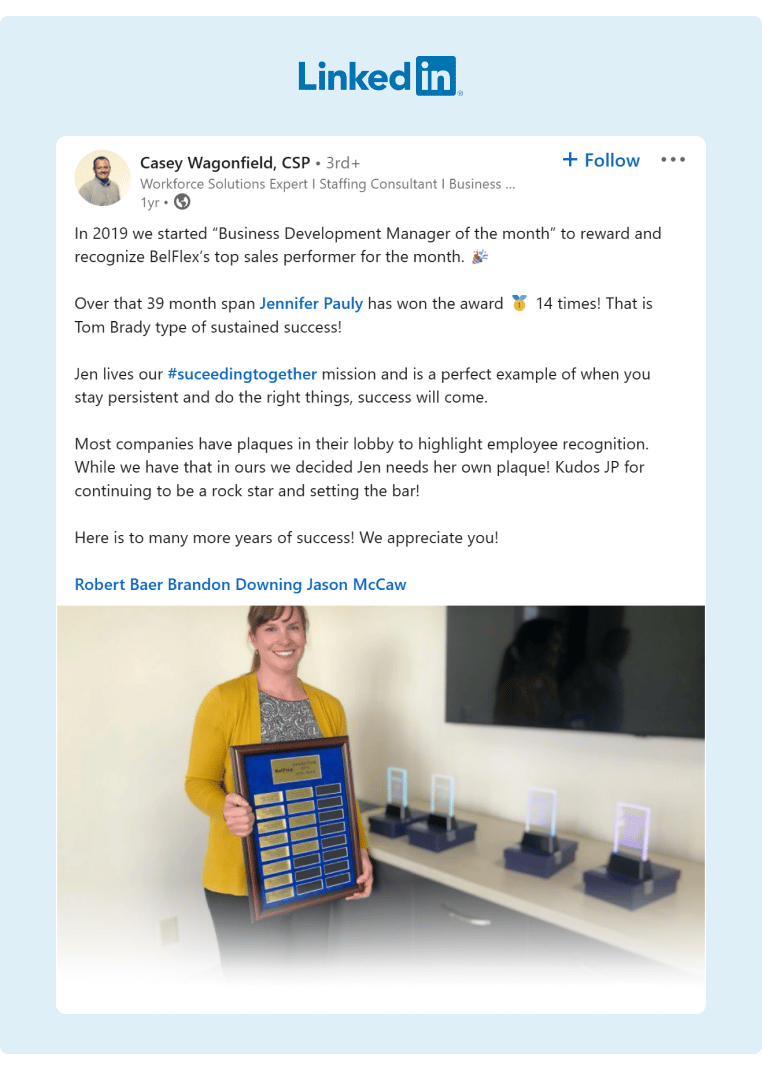
5. Company Events
Hosting company-wide (or departmental) events that get employees out of their cubicles and interacting with others are a great way to spur engagement. These events can be barbecues, picnics, or even attending a sporting event.
Company events are also great for social media employee engagement. Employees can highlight the events on their social media platforms, sharing pictures and videos in their posts. By using employee engagement tools and techniques to share this content, employees will be increasing brand awareness. This gives potential new talent, customers, and stakeholders a glimpse into the company’s culture.
Employee Engagement Best Practices
For brands looking at how to improve employee engagement or how to increase employee engagement, here are some additional employee engagement best practices.
Give Frequent Feedback
Employees who get feedback on a regular basis are more engaged and successful in their roles. In fact, when employees receive meaningful feedback, they are almost four times more likely than other employees to be engaged.
To effectively give (and receive) feedback, use tools like Slack which make it easy to ask questions or relay concerns, conduct formal performance reviews (weekly or monthly), and hold all-hands company meetings (monthly or quarterly).
Create Diversity and Inclusion Programs
When employees of all backgrounds feel included and supported, they’ll be more engaged with your company. Your employee engagement program (if it doesn’t already) needs a diversity and inclusion program, which embraces different genders, races, ages, financial backgrounds, educational backgrounds, and more.
To build an inclusive workplace, create strong anti-discrimination policies, make your building accessible for disabled employees, create hiring and mentorship programs, and celebrate different cultural events and holidays.
Leverage Employee Advocacy
Leveraging employee advocacy is a great way to improve employee engagement. When employees share what they’re working on with their social networks, they feel a source of pride. However, keeping employees engaged isn’t easy. An employee advocacy platform like GaggleAMP can help by streamlining the process and encouraging friendly competition to boost engagement.
Managers can use GaggleAMP’s platform to assign employee-specific engagement activities, so employees know exactly what to say (thanks to GaggleAMP’s AI-powered paraphrasing technology), or which content to engage with.
GaggleAMP’s leaderboard ranks employees by engagement to encourage more participation. When engagement activities are assigned, managers can also assign a specific number of points to each engagement activity. When the employee completes the activity, they earn points.
Then, the highest ranked employee(s) can be rewarded for their efforts thanks to the leadership board which tracks the total engagement activities completed by employees.
Final Thoughts
GaggleAMP is an employee engagement solution that not only simplifies employee advocacy but also helps improve workplace culture. To see how GaggleAMP can boost your employee engagement initiatives, schedule your demo today.





